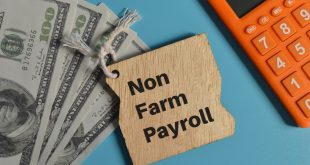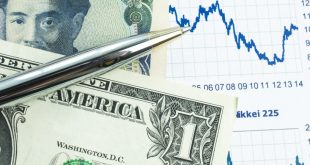It has been an eventful week as the US dollar played some competing roles. This has frustrated some traders, seeking to interpret and know how to deal with critical developments such as the FOMC’s first rate hike in years in light of several Fed speakers during the week.First and foremost, the US dollar has been looked upon as a safe haven as it reflects the world’s largest economy, the largest government bond market and an extremely high sovereign credit rating.
Currencies
Speculators’ net long positioning on the US dollar fell in the latest week. The value of the net long dollar positions slid to $14.13 billion for the week ended April 5, from $16.11 billion the previous week. US dollar net long positioning declined for the first time in five weeks.
The US dollar positioning was derived from net contracts of International Monetary Market speculators in the Japanese yen, euro, British pound, Swiss franc, as well as Canadian and Australian dollars. So far this year, the dollar index has gained 4.4%, after a 6.3% gain in 2021.
The dollar has benefited all year from safe-haven flows during the war in Ukraine, as well as expectations of aggressive Federal Reserve tightening to control the hot inflation. US rate futures have priced in an 85% chance of a 50-basis point hike at the FOMC’s May meeting, with roughly 220 basis points of cumulative hikes for 2022.
The dollar index rose to 100 points for the first time in nearly two years on Friday, boosted by prospects of an acceleration in US interest rates. The dollar rose against rival currencies especially against the euro, which has come under pressure due to investor concerns about the economic costs of the war in East Europe and the presidential elections in France amid fierce competition.
On Friday, the dollar index climbed to a high of 100 points in early European trading hours, its best performance since May 2020. It later lost some momentum and settled in the most recent trading at 99.876.
The index rose 1.4 percent this week in its biggest increase in a month, supported by statements inclined to tighten monetary policy from many policy makers at the Fed who are calling for a faster pace of raising interest rates to curb inflation.
The EUR fell to a new one-month low of $1.0848. It was last down 0.2% at $1.0865. Thursday’s ECB meeting minutes indicated that policy makers are keen to combat inflation but the euro zone has so far taken a more cautious stance than other central banks, which has weakened the euro.
The dollar extended its gains against the Japanese yen, recording 124.23, the highest level in more than a week, close to its best performance in seven years at 125.1 recorded last month. The yen has stabilized this month after falling in March, but remains under pressure as the US raises interest rates and the Bank of Japan intervenes in the bond market to keep rates low. The pound fell against the US currency, falling 0.2 percent in the latest trading, recording $1.30475.
Cryptocurrencies
In cryptocurrency markets, bitcoin rose one percent to about 43,890 dollars. Generally, speculators reduced net short positioning on bitcoin to 244 contracts in the week ending April 5, compared with net shorts of 271 the week. Bitcoin has stabilized above $40,000 after an up and down last couple of months, with the Ukraine war and soaring inflation as backdrop.
Not About Gold, All About Dollar
Gold prices ended last Friday’s trading in the green territory, as it recorded weekly gains, supported by concerns surrounding the rise of US inflation and the expectations about tightening the Fed’s monetary policy. Gold futures contracts for June delivery rose at the end of Friday’s trading session by 0.4% to $1945.60 per ounce.
Landmark Events
The financial markets witnessed a number of important events during the week ending on Friday, April 8, most notably were the following events:
FOMC Minutes
The minutes of the Fed meeting held from 15-16 last March said that FOMC members indicated the possibilities of raising interest rates by 50 basis points in the upcoming meetings, which is in line with the market’s expectations of the interest decision at the next May meeting.
European Central Bank Minutes
The ECB’s minutes showed that policymakers are keen to halt monetary stimulus, with some pushing to take further action. Policymakers at the meeting agreed to end bond purchases sometime in the third quarter, but did not commit to a further rollback of stimulus, even as inflation continued to rise due to higher energy and food prices.
The results of the meeting released Thursday also showed that members wanted to go further, as they set a fixed deadline for bond purchases because they fulfilled their purpose and inflation was now in danger of exceeding the target for an extended period. The EUR traded at 1.088 dollars, to close at the lowest level in almost two years at 1.0804 dollars, which it recorded on March 7.
Investors were concerned about economic growth being hit by the war in Ukraine and rising commodity prices, as well as political uncertainty in France.
EBA’s Interest Rate Decision
The Reserve Bank of Australia kept the interest rate unchanged at a record low of 0.1% for the 16th consecutive month during its April 2022 meeting, as expected.
While the board noted that Australian inflation had picked up and a further increase was expected, the board said it wanted to see actual evidence that the price level was sustainable within the 2-3% target range before it raised rates.
Russian-Ukrainian War Developments
Negotiations are still with no progress and the Russian military troops remained in their positions inside Ukraine. The European Commission failed to impose a ban on European imports of Russian coal, EU also failed to ratify a new package of sanctions against Moscow in a meeting held on Wednesday. European officials said that the failure to pass these measures came for “technical reasons”, and that the Commission may be able to ratify these sanctions next Thursday.
Crude Oil
The WTI crude oil closed lower for a second successive week. Meanwhile, traders digest this week’s IEA reserve release announcements. Oil prices rose at the end of trading last Friday, as it recorded its second consecutive weekly loss, due to concern over the increase in global supply.
At the close of the session, West Texas crude futures for May delivery rose 2.3% to $98.26 a barrel, and recorded weekly losses of 1%.
The WTI crude oil traded a little bit lower around $96.00 after hitting March lows on Thursday. Technical selling after breaking below a long-term pennant could see WTI test $90, but fundamentals would likely then be supportive.
Oil prices were on the back foot on Friday, with front-month WTI futures set to close out a second successive weekend in the red after coming within a whisker of hitting March lows at $93.56 on Friday. At current levels in the mid-$96.00s, WTI is down about half a buck on the day, and just shy of $3.0 on the week.
Commentators have cited announcements throughout the week from IEA nations of crude oil reserve release plans as weighing on crude oil market sentiment. In total, 240M barrels will be released in the coming months, which strategists say eases concerns about an acute shortage of oil in the near term. Continued lack of progress in indirect US-Iran negotiations on a return to the 2015 nuclear pact has raised doubts on the potential release as much as 1.3M barrels per day in sanctioned oil exports, as well as OPEC+ reluctance to increase oil output.
The Week Ahead
This week, the markets are awaiting a group of major central banks’ decisions, most notably: the European Central Bank, the Canadian Central Bank, and the Reserve Bank of New Zealand’s interest rate decision. In the US, consumer price data will be released next Tuesday.

 Noor Trends News, Technical Analysis, Educational Tools and Recommendations
Noor Trends News, Technical Analysis, Educational Tools and Recommendations




